David Suzuki's Blog, page 12
April 24, 2017
Clean up this fracking mess with a letter to the editor

Hey! Want more DSF? Join David Suzuki on Facebook

Adria Vasil helps you choose non-toxic cosmetics

You can avoid harmful chemicals in cosmetics when you shop smarter! (Credit: Lindsay Coulter)
I posed your questions about safer cosmetics to Adria Vasil, bestselling author of the Ecoholic book series and NOW Magazine column.
What's the least toxic deodorant (that works)?
Ones that work don't try to mimic conventional deodorants. Instead, they contain simple ingredients you'd use to make your own -- baking soda, coconut oil, cornstarch or arrowroot powder. (Lindsay's recipe.)
Top brands include Consonant Skincare's Dealkalizing Deodorant, KL Skin Naturals (unscented), Purely Great, and Penny Lane. Some leave a white residue. If baking soda irritates your skin, KL Naturals and Sudsatorium (no plastic package, leaves no white residue) make great baking-soda free options.
What's your favourite natural shampoo or conditioner?
It depends on your hair type. I've tried dozens that didn't agree with me, even though other people raved about them. I love John Masters Organics (tough for tighter budgets) and Acure (makes my new favourite face scrub, too).
What's your favourite natural mascara?
There are many great made-in-Canada brands. Montreal's Zorah Length & Care is 97 per cent natural and 18 per cent organic (Ecocert certified) with sustainably sourced ingredients. (Their palm-derived ingredients are consciously sourced from South America.) Pure Anada is probably the most affordable, about $10. Though not Canadian, 100% Pure is an awesome lengthening mascara. Check out my review of natural mascaras with pictures facing off one eye against another!
What's the least toxic foundation?
I don't wear foundation unless I'm going on TV. And then I always use Canadian-made Sappho. The base is organic aloe and mica. Mica is a mineral pigment. It's often mined with child labour in India but this is mined in the U.S. It's not cheap but performs well, was actually designed for TV actors and a little goes a long way. For more reviews see my foundation guide.
What's the eco-friendliest toothpaste?
Besides making it yourself? (Lindsay's recipe.) Probably Nelson Naturals. It comes in a reusable or recyclable glass jar and uses all-natural ingredients. They make an activated charcoal whitening treatment, too.
What about lip balm?
I like Fable Naturals which comes in a compostable cardboard tube and uses fair trade cocoa butter. (Lindsay's recipe.)
What's your favourite sunscreen?
When I do sunscreen testing, I rope in family and friends of all different skin tones. DeVita's Solar Protective Moisturizer is the biggest crowd pleaser. It feels like a light moisturizer, but it's not water resistant. For hot, sweaty summer days with lots of physical activity, I choose Green Beaver. My regular facial sunscreen is Andalou's CC cream with SPF.
Do you have a favourite product? Comment on this blog to enter to win a copy of Ecoholic Body: Your Ultimate Earth Friendly Guide to Living Healthy and Looking Good. (Contest closes May 15, 2017)
Sincerely,
Lindsay Coulter, a fellow Queen of Green
Hey! Want more DSF? Join David Suzuki on Facebook

April 21, 2017
Richmond Rangers come together to plough and plot a Butterflyway
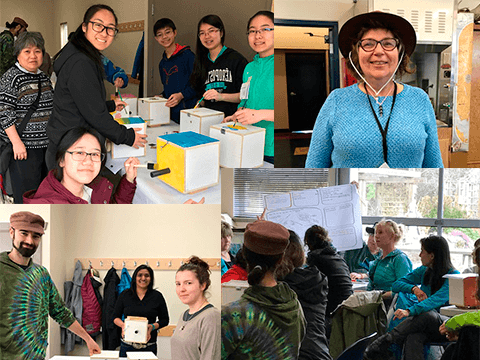
Forty volunteer Butterflyway Rangers hard at work planning pollinator-friendly habitat for Richmond, B.C.
You know there's work to do when a well-known tech magazine like WIRED publishes a feature titled Beyond honeybees: Now wild bees and butterflies may be in trouble.
What's worse: The article was published in 2014.
"It's not just honeybees that are in trouble. Many wild pollinators -- thousands of species of bees and butterflies and moths -- are also threatened. Their decline would affect not only our food supply, but our landscapes, too," WIRED's Brandon Keim wrote.
It became clear to scientists in 2014 that honeybees are in trouble, and that wild bees and butterflies are also in jeopardy. According to entomologist Art Shapiro of the University of California -- who spent more than four decades counting butterflies across central California -- wild pollinator decline is widespread, and goes beyond butterflies that require specific habitats or food sources. The most troubling trend is that the so-called "generalist" species are also doing poorly.
Ecologist Laura Burkle of Montana State University told WIRED, "Almost 90 percent of the world's flowering species require insects or other animals for pollination. That's a lot of plants that need these adorable creatures for reproduction. And if we don't have those plants, we have a pretty impoverished world."
According to WIRED, this is how impoverished our world would become if we do not take action: "Wild pollinators in the U.S. still provide an estimated $14.6 billion worth of pollination services every year. The oft-cited figure that one in every three bites of food was pollinated includes not just honeybees, but all pollinators."
So, what to do?
In Toronto, Markham, Montreal, Victoria and Richmond, citizens are coming together through the Butterflyway Rangers program.
In Richmond, B.C., 40 rangers looked under the microscope to refresh their memories about butterflies and bees. They gathered at the Richmond Sharing Farm to learn about sustainable food sources, make bee houses and, most importantly, strategize and share ideas. All this for one purpose: to help build and rebuild pollinator habitat -- action needed now more than ever.
These Rangers know butterflies and bees are not only the stuff of children's books and fairy tales. Wild pollinators are crucial to our well-being. Richmond Rangers and their counterparts in the other four Canadian cities are determined to play a role in pollinator survival.
What's next?
Together, Richmond Butterflyway Rangers will plant butterfly gardens and create pollinator corridors in their neighbourhoods, including Thompson, Steveston, City Centre, Broadmoor, Shellmont, Cambie East and East Richmond. And that's just the beginning.
According to Dr. Shapiro, "If you get five households on a city block, you've got a corridor. I would like to see communities get together to have butterfly garden corridors running through them."
Butterflyway Rangers will create and stitch together pollinator patches and invite neighbours, friends and colleagues to join. Once a neighbourhood has at least a dozen new butterfly-friendly patches, the David Suzuki Foundation will formally recognize it as an official Butterflyway, including signage and a spot on a national map.
If you missed the opportunity to sign up as a Butterflyway Ranger, don't panic. You can still help! Plant pollinator-friendly and native plants on your patio or in your garden and learn more about our Butterflyway Project.
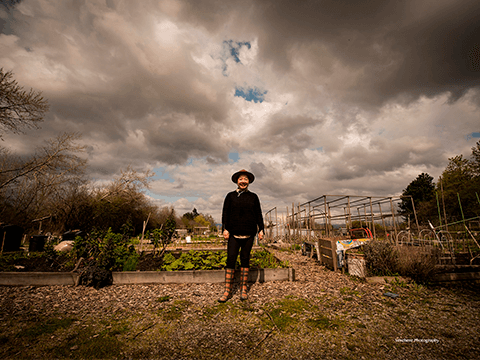
(Credit: Verchere Photography)
Hey! Want more DSF? Join David Suzuki on Facebook

April 20, 2017
March for science, march for Earth Day, march for humanity!
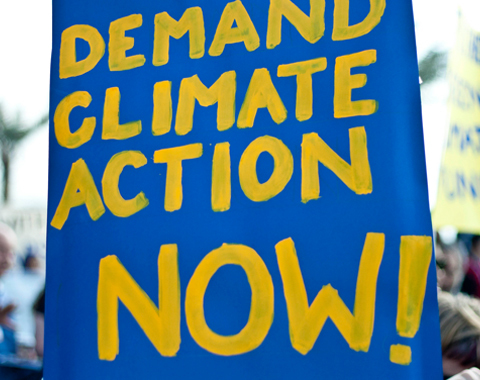
(Photo credit: theverb.org via Flickr)
Science isn't everything. But it is crucial to governing, decision-making, protecting human health and the environment and resolving questions and challenges around our existence.
Those determined to advance industrial interests over all else often attack science. We've seen it in Canada, with a decade of cuts to research funding and scientific programs, muzzling of government scientists and rejection of evidence regarding issues such as climate change.
We're seeing worse in the Unites States. The new administration is proposing drastic cuts to the Environmental Protection Agency, National Institutes of Health, National Oceanic and Atmospheric Administration, NASA and others. Information about climate change and environmental protection is being scrubbed from government websites, and scientists are being muzzled. Meanwhile, the government is increasing spending on military and nuclear weapons programs.
There's nothing wrong with challenging research, developing competing hypotheses and looking for flaws in studies. That's how science works. But rejecting, eliminating, covering up or attacking evidence that might call into question government or industry priorities -- evidence that might show how those priorities could lead to widespread harm -- is unconscionable. It's galling to me because I traded a scientific career for full-time communication work because good scientific information helps people make the best decisions to take us into the future.
Many scientists prefer to work quietly, letting their research speak for itself. But recent attacks are galvanizing scientists and supporters throughout the U.S. and elsewhere. The March for Science on Earth Day, April 22, has been building steam for months. The main march will take place in Washington, D.C., but more than 425 marches are planned around the world. That kicks off a week of action, culminating in the Peoples Climate March on April 29 -- also focused on Washington but with satellite marches throughout the world.
The March for Science website says organizers are "advocating for evidence-based policymaking, science education, research funding, and inclusive and accessible science."
The group's 850,000-member Facebook page is inspiring, with "advocates, science educators, scientists, and concerned citizens" sharing personal testimonials about their reasons for marching and why science is important to them, along with ideas for posters and slogans, questions about the march, articles about science and exposés of climate disinformation sent to schools and science teachers by the anti-science Heartland Institute.
March participants are a wide-ranging group, from a neuroscientist who is marching "for the thousands of people suffering from spinal cord injury" to sci-fi fans who are marching "Because you can't have science fiction without science!" to a scientist marching to honour "the many, many women and young girls interested or involved in science" to those marching "because we know climate change is real."
Celebrating and advocating for science is a good way to mark Earth Day. I'll be in Ottawa, where a march is also taking place. David Suzuki Foundation senior editor Ian Hanington and I will launch our new book, Just Cool It!, at an Ottawa Writers Festival event that also features award-winning Nishnaabeg musician, scholar and writer Leanne Betasamosake Simpson.
Climate change is one area where anti-science rhetoric and actions at the highest levels of society are endangering human health and survival. Our book is a comprehensive look at the history and implications of climate science, the barriers to confronting the crisis and the many solutions required to resolve it.
It's discouraging to witness the current attacks on science, and the ever-increasing consequences of climate change, diminishing ocean health and other human-caused problems, but seeing so many people standing up for science and humanity is reason for optimism. Of all the many solutions to global warming and other environmental problems, none is as powerful as people getting together to demand change.
Every day should be Earth Day, but it's good to have a special day to remind us of the importance of protecting the air, water, soil and biodiversity that we all depend on for health and survival. Politicians are supposed to work for the long-term well-being of people who elect them, not to advance the often short-sighted agendas of those who pay large sums of money to get their way regardless of the consequences. Standing together to make ourselves heard is one of the best ways to ensure they fulfil their responsibilities.
Hey! Want more DSF? Join David Suzuki on Facebook

April 18, 2017
David Suzuki Foundation reaction to B.C. Liberal Party climate platform
VANCOUVER-- With the release of its 2017 election platform, the B.C. Liberal party has maintained its position on climate action and expanding fossil fuel production within the province. The platform celebrates achievements put in place under former premier Gordon Campbell, which have not been strengthened or built upon for a number of years.
The platform calls for:
• Extending the freeze on the carbon tax (in place since 2012) to 2021, effectively reducing B.C.'s price on carbon pollution as inflation erodes its value.
• Continued expansion of the LNG/fracking industry within the province.
• Pushing forward the costly and controversial Site C dam project.
• Hitting B.C.'s 2050 emissions reductions target, but not its 2020 target.
Analysis of B.C.'s Climate Leadership Plan by the Pembina Institute suggests present commitments will cause the province to miss its 2020 emissions reductions target and likely its 2050 target. This failure is due in large part to the decision by the B.C. government not to implement the 32 recommendations prescribed by the Climate Leadership Team that the government itself assembled.
"The B.C. Liberal platform suggests the province can expand its fossil fuel industry and achieve ambitious emissions reductions targets at the same time -- but this is not the reality," said David Suzuki Foundation policy analyst Steve Kux. "The present plan rejects expert input into necessary climate action and pushes ahead with projects that will delay the growth of low-impact renewable energy in B.C."
Last February, the Canadian Wind Energy Association shut down its operations in B.C., citing a lack of interest on the part of the provincial government and BC Hydro in pursuing opportunities for wind power. At the same time, provinces like Alberta and Saskatchewan have made commitments to grow their wind and solar power capacity.
"Instead of focusing on fossil fuels like fracked gas, B.C. should invest in good, long-term jobs in clean tech," Kux said. "This province would benefit from continued leadership in reducing emissions and growing a clean energy economy."
The current Climate Leadership Plan contains a few positive elements, such as strengthening B.C.'s low-carbon fuel standard and reducing methane emissions from the LNG/fracking industry by 45 per cent by 2025, but it relies heavily on carbon offsets from forestry rather than plans to actually reduce emissions.
30
Media contact:
Emily Fister, Climate Change & Clean Energy Communications Specialist
David Suzuki Foundation
604-440-5470
Hey! Want more DSF? Join David Suzuki on Facebook

April 14, 2017
Ask your MP to support an environmental bill of rights

(Credit: Larm Rmah)
The right to a healthy environment is the simple yet powerful idea that all Canadians deserve to breathe fresh air, drink clean water, eat safe food and enjoy a stable climate.
Hey! Want more DSF? Join David Suzuki on Facebook

April 13, 2017
Citizen science and genetic testing yield positive results

(Credit: University of Michigan School of Natural Resources & Environment via Flickr)
Since I started working as a geneticist in the early 1960s, the field has changed considerably. James Watson, Francis Crick and Maurice Wilkins won the 1962 Nobel Prize in physiology or medicine for their discovery of the double helix structure of DNA. Researchers then "cracked" the genetic code, which held promise for fields like health and medicine. It was an exciting time to be working in the lab.
More than 40 years later, in 2003, an international group of scientists sequenced the entire human genetic code. Researchers can now find a gene suspected to cause a disease in a matter of days, a process that took years before the Human Genome Project. As of 2013, more than 2,000 genetic tests were available for human conditions. Forty years ago, I never dreamed scientists would have the knowledge and manipulative capabilities that have become standard practice today.
In a couple of decades, genetics has allowed for systematic inventorying of the world's biodiversity. Canada's Centre for Biodiversity Genomics at the University of Guelph has the genomes of more than 265,000 named species identified with barcodes in its database. The cost to analyze a sample against this free public database is about $10. Cost reductions and digital communication allow citizen scientists to utilize an enormous storehouse of information.
Young citizen scientists in San Diego were recently able to help compile information about the area's biodiversity through their local libraries. Kids signed out genetic testing kits -- which included sampling vials, tweezers and a return bag -- through Catalog of Life @ the Library. They then uploaded photos and locations of their finds using a LifeScanner or website. It's part of an effort to collect 4,000 samples of local bug life. After returning kits to the library, the young scientists could go online to see and compare the genetic barcodes of their discoveries.
According to the library, "Only an estimated 20 percent of species on earth have been identified by their DNA barcode." The San Diego program is part of Barcode of Life, which has the ambitious goal of identifying all life on Earth to help researchers "understand the diversity of species, monitor the health of the environment and the impacts of climate change." Canada's Centre for Biodiversity Genomics is doing the genetic sequencing.
People in Canada can also help identify seafood fraud with the LifeScanner service. Genetic testing helps consumers identify the species and possibly origin of fish they buy -- important for people who care about sustainability and health and nutrition.
Identifying and tracing seafood has long been a challenge, especially because about 40 per cent of wild-caught seafood is traded internationally -- and labelling is often inadequate. Once fish are skinned, cleaned and packaged, it's not always easy to tell what they are. If you buy something labelled "rockfish" in Canada, it could be one of more than 100 species. Often, labels don't indicate whether the fish were caught or processed sustainably. Although the European Union and U.S. require more information on seafood labels than Canada, one study found 41 per cent of U.S. seafood is mislabelled.
A European study found stronger policies combined with public information led to less mislabelling. People in Canada have demanded better legislation to trace seafood products. More than 12,000 people recently sent letters to government asking for better labelling.
SeaChoice (the David Suzuki Foundation is a member) is working with LifeScanner to register 300 people in Canada to test seafood, in part to determine whether labels are accurate. Participants will get testing kits, buy seafood, collect data and images and return samples in a provided envelope. Samples will be analyzed and coded, with results posted online.
With the help of citizen scientists, genetic testing can offer a powerful approach to righting environmental wrongs. Combining crowd-sourced scientific data, public policy reform and consumer activism is already showing positive results. The same approach could work in areas such as testing for antibiotics, pesticide and mercury residues and more.
DNA Day is celebrated in Canada on April 21 and the U.S. on April 25, to commemorate completion of the Human Genome Project in 2003 and discovery of DNA's double helix in 1953. We've come a long way since then, but we still have much to learn. Citizen scientists are helping!
Hey! Want more DSF? Join David Suzuki on Facebook

Grassy Narrows deserves your support
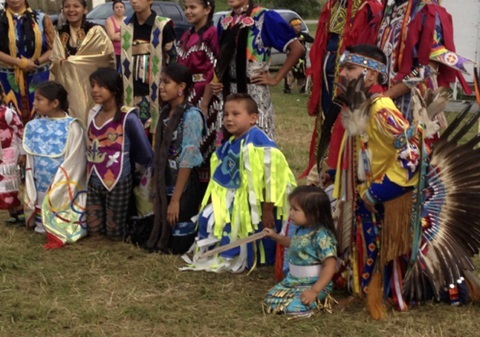
I recently had the privilege of attending a powwow at Grassy Narrows--a ceremony held to honour the community's long fight to remediate the poisoned English-Wabigoon watershed and celebrate Ontario Premier Kathleen Wynne's recent commitment of to clean it up.
It was also held to honour the folks who have been standing with Grassy -- amazing people like Patricia Sellers, a freshwater scientist who has been working with the community for over 17 years, and Donna Mergler, a renowned expert on mercury who is devoting her retirement time to community health studies.
The health and livelihoods of the people of Grassy Narrows First Nation were deeply affected in the late 1960s when the province of Ontario allowed a pulp and paper company to dump 10 tonnes of mercury into the watershed, poisoning the water, fish and community.
It's a bit of a trek to get to Grassy, which is located in northern Ontario, on the border of Manitoba. Most supporters flew to Winnipeg and drove four hours.
Overall, about 10 supporters attended, with notable absences of folks who weren't able to make it -- friends to the community like Thor Aitkenhead, Craig Benjamin from Amnesty International, Amanda Klasing from Human Rights Watch and a team of supportive doctors from Japan. (The term for mercury poisoning, Minimata disease, was coined in Japan after mercury was dumped in Minimata Bay.)
The numbers kind of surprised me. I often look back on significant movements in history and wonder if I would have joined others in bravely stepping up against injustice. Would I have been there to cheer on the first African-American child who braved her way to school amid the jeers of haters, had I lived in the town where it happened? Would I have stood for the abolishment of slavery before it became the norm to do so?
Hindsight is 20/20, and it's easy to look back on landmark events and see which side was the right side of history to stand on. Once, just released from a holding cell after I got arrested at a protest for something I believed in, I called my parents, and mom surprised me by saying, "Oh, honey, I'm proud of you. One of my big regrets is not participating in the Martin Luther King march."
It's easy to see that those leading the campaign to bring justice to Grassy Narrows stand on the right side. There are few (if any) activists I respect more than Judy Da Silva, a grassroots leader within the community who speaks with quiet strength. (Don't tell Jane Goodall, but Judy bumped her from the top of my hero list a few years ago.) Judy is one of many leaders in the community--the whole community including youth and elders have fought tirelessly for the progress that has been achieved to date.
Many people in Canada have come to understand the responsibility of advancing reconciliation in accordance with the recommendations outlined in the Truth and Reconciliation Commission led by Justice Murray Sinclair. Many have come to understand, too, the deep injustices that have been imposed upon Canada's Indigenous peoples, from residential schools to the '60s scoop to land dispossession to institutional racism. Thousands of Canadians have participated in activities to support Grassy Narrows, such as River Runs activities, online petitions and social media campaigns.
Every person who supports Grassy Narrows helps to make community members feel less isolated -- community members who have, until this year, determinedly continued to speak to the backs of government ministries that ignored them for more than four decades.
Yet I want to see more active supporters, and sometimes I can't help but wonder that there are only dozens who have made the fight for Grassy an ongoing part of their lives, not thousands.
I want every person in Ontario to take on this cause, to hold the Ontario government accountable to the promise of expedited remediation so the people of Grassy Narrows can once again eat the fish in English-Wabigoon river system without fear of mercury poisoning. I want more people to realize now that this is one of the most important social justice issues of our time, and to stand with Grassy, so that one day they will be able to tell their grandchildren with pride they did.
Hey! Want more DSF? Join David Suzuki on Facebook

April 12, 2017
How to identify different kinds of bees
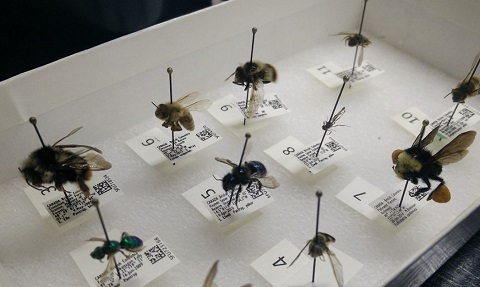
Can you spy the pollen sacs on the bumble bee? (Credit: Lindsay Coulter)
Recently, I had the privilege of attending bee school. Well, not exactly but I met bee lovers/experts--Dr. Elizabeth Elle with Simon Fraser University and Dr. Cameron Cartiere with Border Free Bees.
I learned how to tell a bee from a wasp from a fly, AND defining characteristics of different types of bees.
Here are some tricks and tips to tell bees apart:
Bumble bees
Striped abdomen
Large, fuzzy body
Pollen sacs on thighs
Cute, males even have moustaches
Honey bee
Amber and black striped abdomen (versus yellow)
Long, narrow body
Pollen sacs on thighs
"Hairy" quality to the eyes
Hairy belly bee
Dark coloured abdomen and thorax
Round body
Pollen carried under belly
E.g., blue orchard mason bees, leaf cutter bees and resin bees
Mining bee
Dark abdomen and thorax
Pollen up entire leg not just the thigh (they wear pollen pants!)
They range a lot in size
How have you encouraged these types of bees to call your yard or garden home?
Sincerely,
Lindsay Coulter, a fellow Queen of Green
Hey! Want more DSF? Join David Suzuki on Facebook
[image error]
April 11, 2017
B.C.'s grizzlies and human-caused mortality in 2016
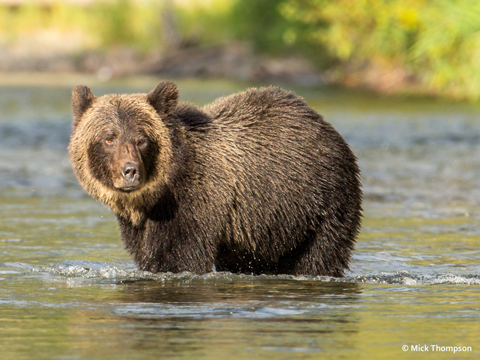
British Columbia's grizzly bears are among the most vulnerable large animals on the continent. The threats to grizzly bears are still largely human-caused. They include climate change, loss of habitat from industrial and recreational development and unsustainable mortality rates from direct causes such as trophy hunting.
Hey! Want more DSF? Join David Suzuki on Facebook

David Suzuki's Blog
- David Suzuki's profile
- 247 followers



